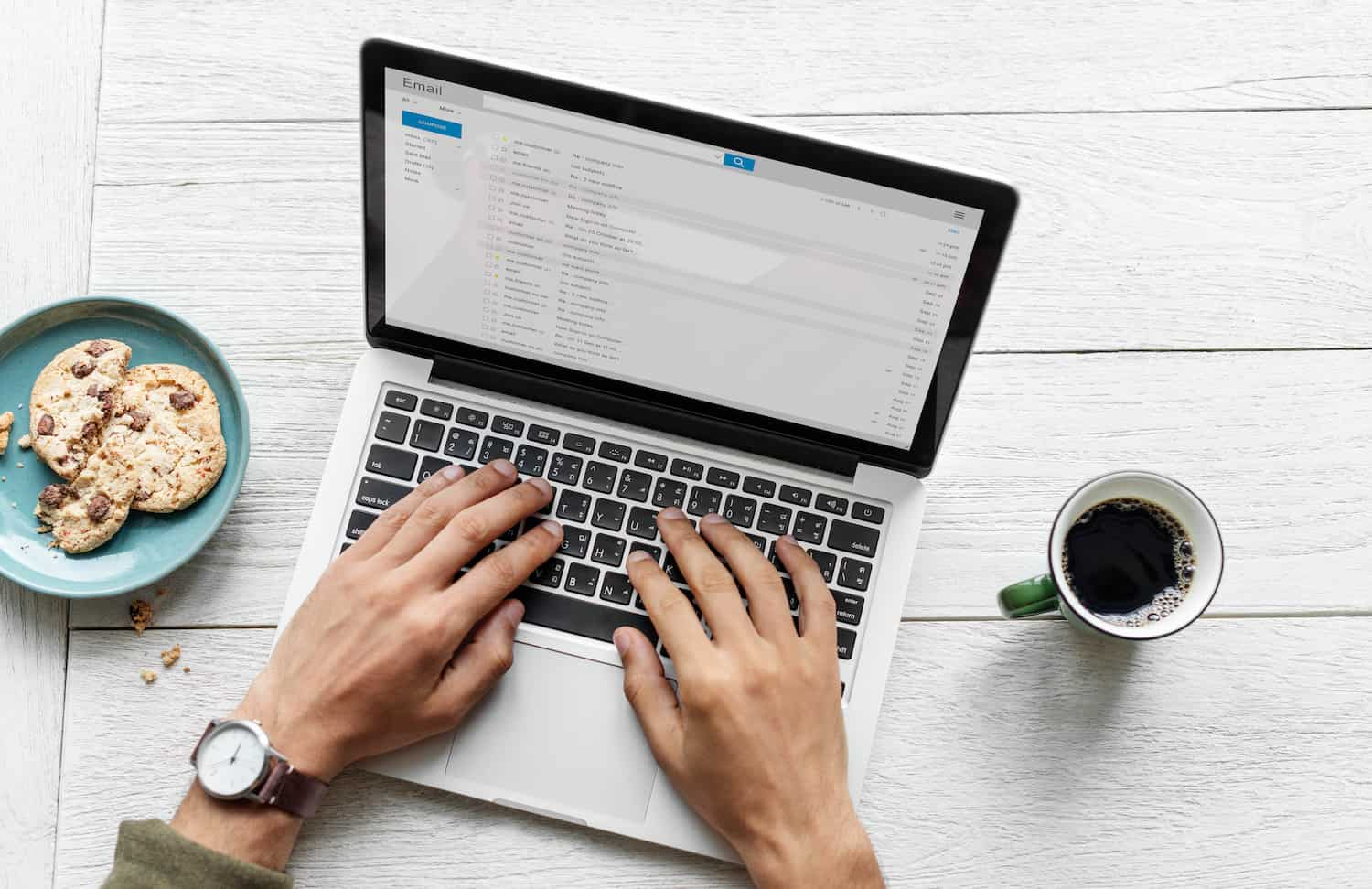
Index
1. Introduction
Within the constant evolution of Digital Marketing, there is a tool that remains as a fundamental pillar for effective communication with your audience: Email Marketing.
Email continues to be a direct way to connect with your customer and subscriber base, providing a personalized channel to share relevant content, exclusive promotions, or product updates, among other options. And in this context, Mailchimp emerges as an invaluable ally, offering a suite of intuitive and powerful tools that allow marketers and entrepreneurs to create, send and analyze email marketing campaigns with ease and efficiency.
In this article, we’ll explore step-by-step how you can use Mailchimp to take your email marketing strategy to the next level . We will provide you with the tools and knowledge you need to create newsletters that engage your audience and drive business growth.
Over the next few paragraphs we will discover how Mailchimp will help you achieve your business goals and strengthen your relationship with your Customers. Let’s go! ;]
2. First steps: strategic planning
Before launching into the creation and sending of newsletters, it is very important to dedicate time to strategic planning. This initial stage is fundamental to establish the solid foundations on which you will build your Email Marketing campaign and guarantee its long-term success.
Definition of clear and achievable objectives
The first step in strategic planning is to clearly define your marketing objectives. What do you hope to achieve with your newsletters? Do you want to increase sales, encourage user engagement, strengthen brand loyalty or achieve some other specific goal? Setting clear and achievable goals will help you focus your efforts and measure the success of your email marketing campaign.
Identification of your target audience
Once you’ve established your objectives, it’s time to focus on your target audience. Who are your ideal customers? What are their needs, wants and challenges? If you haven’t already done so, conduct research to thoroughly understand your audience and segment them into smaller groups based on demographics, buying behavior, interests or other relevant variables if that’s something you might be interested in. The better you understand your audience, the more effective your email marketing strategies will be.
Establish a calendar
Next it’s time to establish a clear and realistic editorial calendar for your newsletters. Decide how often you will send your emails and plan the content of each one in advance. A calendar will help you maintain consistency in your communications, avoid duplication of content and allow you to adapt your messages to important events or dates relevant to your audience. mailchimp has an integrated calendar that will help you keep track of everything.

3. Creating a list of subscribers
A well-built subscriber list is the heart of any successful email marketing strategy. It’s not just about having a large number of contacts, it’s about having an engaged audience that is receptive to your messages.
Building a strong subscriber list
The first step in creating a subscriber list in Mailchimp is to collect email addresses of people interested in your content, products or services. You can do this in several ways, such as including subscription forms on your website, offering discounts or free resources in exchange for subscriptions, or participating in events where you can capture relevant leads for your business.
Example: if you have a clothing business, you could offer your website visitors the chance to subscribe to your mailing list to receive exclusive discounts on their first purchase or access exclusive content on the latest trends. By providing a relevant and attractive incentive to your audience, you will increase the likelihood that visitors will subscribe and become part of your subscriber list.
Segmentation for effective personalization
Once you have started building your subscriber list, you can segment it into smaller groups with similar interests and characteristics. Segmentation allows you to send relevant and personalized content to each segment of your audience, which increases the likelihood that your subscribers will interact with your newsletters and take desired actions.
Example: A pet products store could segment its list according to each subscriber’s pet (dogs, cats, birds, etc.) or their specific interests (food, toys, health care, etc.). You could then send personalized content and offers that are tailored to the needs and preferences of each segment, thus increasing the relevance and effectiveness of your newsletters.
4. Design and customization
The design and personalization of your newsletters play a crucial role in your ability to capture the attention of your subscribers and effectively convey your message.
Template selection and customization
Mailchimp offers a wide variety of pre-designed templates that you can use as a starting point for your newsletters. These templates are professionally designed and fully customizable, allowing you to easily adapt them to your brand image and the specific content of each email.
You can select the one that best suits your needs and then customize it with your own colors, fonts, images and logo to create a consistent and attractive visual presentation.

Focus on usability and user experience
In addition to being visually appealing, your newsletters should also be easy for your subscribers to read and navigate. Make sure to use a clean, uncluttered design that naturally guides the reader’s eye and highlights the most important elements, such as calls to action (CTAs) and links to your website or products.
It is also VERY important to optimize your newsletters for mobile devices, as almost 50% of users open their emails from mobile devices. Mailchimp allows you to preview how your design will look on different devices before sending, allowing you to make adjustments to ensure an optimal experience on all devices.
Dynamic customization
Personalization is one of the keys to success in email marketing. Mailchimp allows you to use merge tags to personalize your newsletters with the recipient’s name or other relevant information, creating a more personal experience for each subscriber.
But personalization is not just limited to email content. You can also use information collected from your subscribers, such as their interests, purchase history or geographic location, to send even more personalized content.

5. Relevant and quality content
The content you share in your newsletters should not only be interesting to your subscribers, but should also be aligned with your business objectives and brand identity.
Understanding your audience’s needs and preferences
The first step to creating relevant, quality content is to thoroughly understand your audience’s needs, wants and preferences. Conduct market research, subscriber surveys and data analysis to gain insight into what really matters to them and what they are looking for in your newsletters.
Example: if you have a beauty products store, you could send makeup and skin care tips, reviews of popular products and beauty tutorials that solve common problems and meet the needs of your audience.
Diversification of formats and topics
Variety is key to maintain the interest of your subscribers and avoid monotony in your newsletters. Experiment with different content formats, such as informative articles, video tutorials, infographics, interviews, case studies or even customer stories.
Also, don’t limit yourself to one topic in your newsletters. Keep a balanced mix of content related to your industry, relevant news, practical tips, special offers and exclusive content for subscribers. This will increase the likelihood that your subscribers will interact with your emails.
Offering exclusive content and special offers
A great way to keep your subscribers engaged with your content is to offer them exclusive content and special offers they can’t find anywhere else. This can include early access to sales, exclusive discounts, invitations to special events or behind-the-scenes content that is not available elsewhere in your digital universe.
Encouraging interaction and feedback
Finally, don’t forget to encourage interaction and feedback from your subscribers in your newsletters. Include clear calls to action (CTAs) that invite your subscribers to share their opinions, answer surveys, leave comments or participate in contests and sweepstakes.
Example: you can ask your subscribers to share their favorite recipes, vote for their favorite product or participate in a photo contest related to your brand. This will not only increase your subscribers’ participation, but it will also provide you with feedback that you can use to improve your future email marketing campaigns.
Access to our Email Marketing course with Mailchimp
6. Strategic programming and optimization of shipment timing
The timing of your newsletters can have a significant impact on their effectiveness and the response of your subscribers.
Understanding your audience’s behavior
The first step to proper scheduling is to understand your audience’s behavior and when they are most likely to be active and receptive to your messages. Analyze data from your past campaigns to identify open and click-through patterns, as well as the times and days of the week when your emails perform best.
For example, if you have a B2B business, you may find that weekdays, especially Tuesday and Thursday mornings, are the ideal times to send your newsletters, when your subscribers are more involved in their work and more likely to check their email.
Using Mailchimp’s scheduling tool
Mailchimp offers a scheduling tool (depending on your account type) that allows you to send your newsletters at the optimal time, taking into account your audience’s time zone and email opening behavior. This feature allows you to schedule your emails to be delivered automatically at the most favorable time for each subscriber, thus increasing the likelihood that they will be opened and read.

In addition, Mailchimp also allows you to perform A/B tests to determine the best time to send your newsletters. You can divide your subscriber list into groups and send the same newsletter at different times to see which one generates a higher open and engagement rate. Based on the results of these tests, you can adjust your sending strategy to further optimize the performance of your emails.
Adapting programming to relevant events and seasons
In addition to taking into account the behavior of your audience, it is also important to adapt the timing of your newsletters to events and seasons relevant to your business. For example, if you have a fashion store, you may want to send newsletters in advance of sale seasons, promoting the latest trends and special offers.
Similarly, you can take advantage of specific events, such as holidays or product launches, to send themed emails and special promotions that generate excitement and increase subscriber engagement.
If you want to know more about how to design Email Marketing strategies to increase sales, we have a very complete article in our blog.
7. Detailed analysis and continuous improvement
Once you’ve sent your newsletters, it’s essential to analyze the results to understand what’s working and what’s not. Mailchimp offers detailed analytics tools that allow you to track important metrics, such as open rate, click-through rate and conversion rate. We take a more in-depth look at key metrics in this article. Use this information to identify areas for improvement and continually optimize your email marketing campaigns. Analysis and continuous improvement are key to maintaining the relevance and effectiveness of your newsletters over time.
Boost your email marketing with us, we are Mailchimp and Zoho Partners
At Reinicia, as Zoho and Mailchimp partners, we are here to help you get the most out of these applications. From initial configuration to process automation, through training your team and any questions you may have, we are at your disposal and have more than 10 years of experience with these tools!
